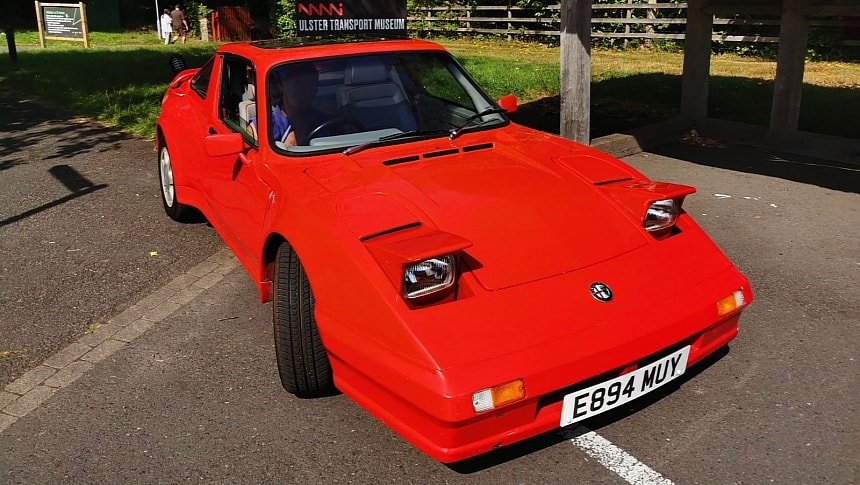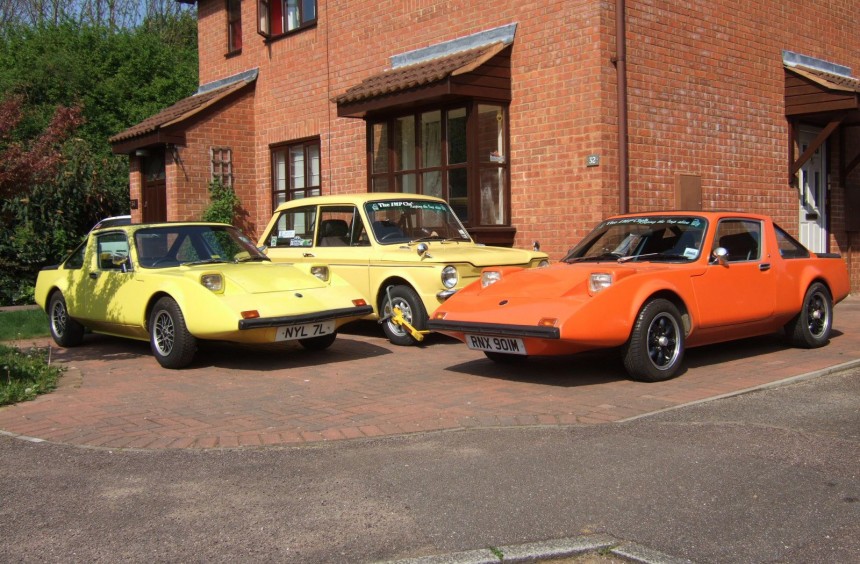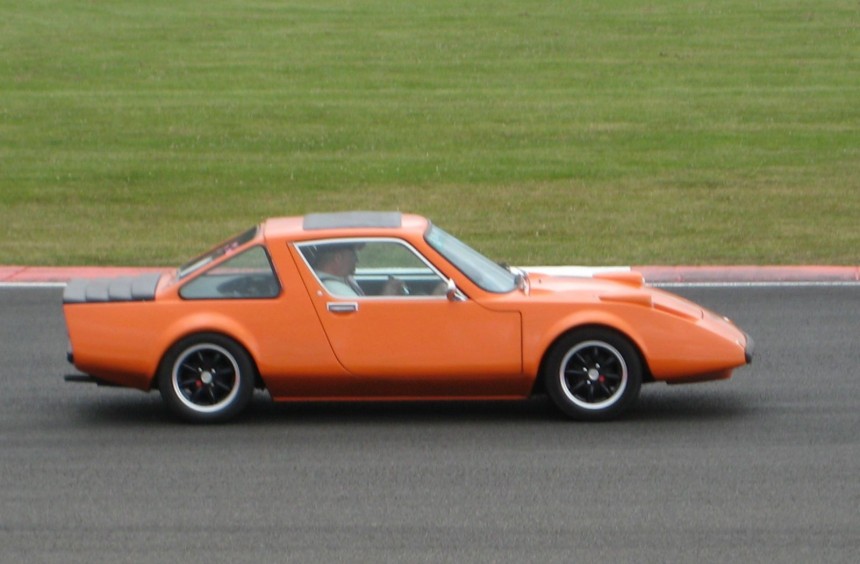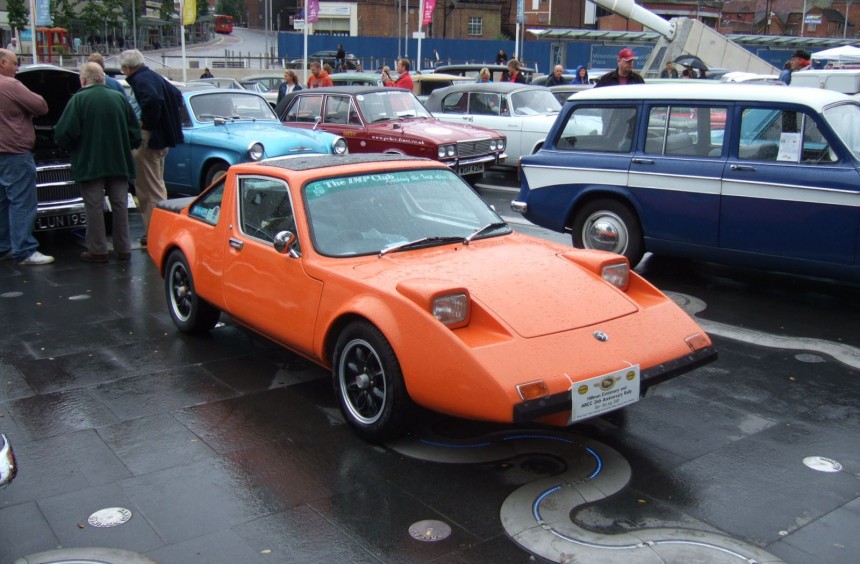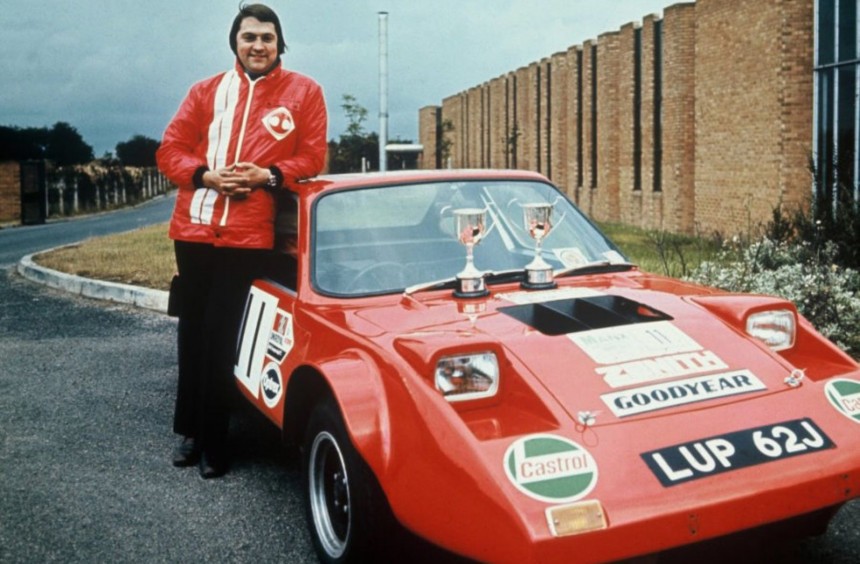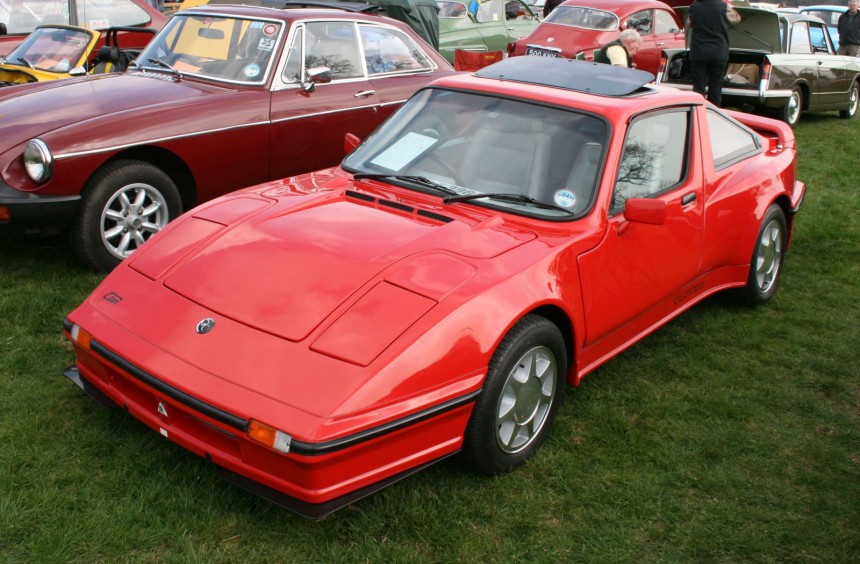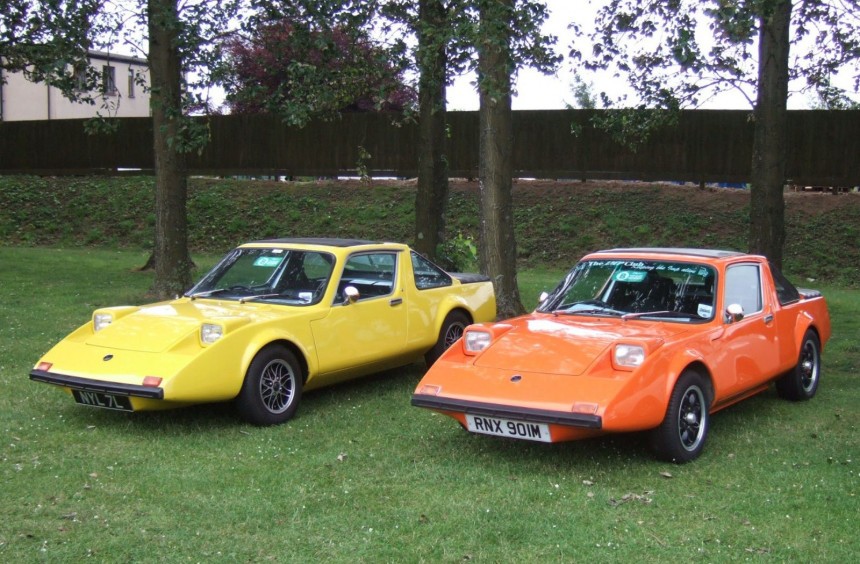Though it had a pretty strange name and few remember it ever existed, the small, agile, and ultra-lightweight Clan Crusader was a Goliath-slaying automotive David who made waves on public roads and motorsport events during the first part of the 1970s.
The great Colin Chapman once said: "Adding power makes you faster on the straights. Subtracting weight makes you faster everywhere."
This simple yet profound statement turned into a philosophy that made Lotus one of the most successful names in motorsport during its first two decades of existence.
Moreover, prioritizing lightweight construction over raw power gave birth to a multitude of incredibly good sports cars.
Some of those cars became world-renowned automotive legends, while others succumbed to external factors before they got the chance to shine on an international stage.
One such case is the Clan Crusader, a promising ultra-lightweight British sports car that only survived a few years on the market but managed to leave behind a fascinating story that deserves to be told.
The Clan Crusader's story began in the late 1960s when a small group of enthusiasts led by engineer Paul Haussauer and designer John Frayling decided to leave Lotus with the dream of developing their own ultra-lightweight sports car.
In 1969, the group founded the Clan Motor Company and purchased a facility located in Washington, Tyne and Wear, England.
Two years later, their dream car, christened Crusader, entered production with the promise of offering sports car enthusiasts a small, light, well-built, and cheap-to-maintain sports car with Lotus-rivaling maneuverability.
The Crusader was based on a bespoke monocoque designed by Brian Luff, one the key people behind the dominating Lotus 72 Formula 1 car that brought Lotus three Constructors' Championships.
Fabricated almost entirely out of glass-reinforced plastic (GRP or fiberglass), the entire structure was composed of two main structures, which were joined together using an innovative clamshell molding technique.
Though the body and chassis combo didn't make the Crusader the prettiest sports car of the 1970s, it was extremely light, remarkably strong, and, thus, surprisingly safe.
During a safety test conducted before the start of production, a Crusader was crashed into a brick wall at around 30 mph (48 kph), which resulted in a cockpit distortion of 0.8 inches (2.03 cm). Considering that up to 5 inches (12.7 cm) of cockpit distortion was allowed for road homologation in the UK at the time, the Crusader was one of the safest cars in its segment.
But safety was just a product of clever engineering. The main focus points of development were low weight and flawless handling.
While the main structure was entirely custom and designed in-house, the drivetrain of the little Crusader was sourced from the Mark III Hillman Imp Sport (aka the Sunbeam Imp in other markets), a small Mini rival produced by Chrysler Europe.
The engine, inspired by the famous Coventry Climax FWMV, initially displaced 875 cc. Mounted in the rear and linked to a four-speed manual, the small SOHC straight four produced 51 hp.
However, since the whole Crusader weight just a little over 1,102 pounds (600 kg), fluids included, the engine was enough for a 0 to 60 mph (kph) acceleration time of 12.9 seconds and a top speed of 99 mph (159 kph).
More importantly, the sports car was extremely agile and easy to drive, earning universal praise for its handling from the British motoring press.
That was made possible by transplanting the Imp's front swing axle and rear semi-trailing arm setup with spring and damper rates tuned specifically for the Crusader with the help of British rally ace Andy Dawson.
Available in either fully-built or kit form for £1,400 and £1,123, respectively ($30,647 and $24,583 in 2024 money), the tiny sports car wasn't cheap.
Nevertheless, with renowned British magazines highlighting the Crusader's handling and build quality, orders quickly began piling up.
However, by 1973, the global oil crisis, the rise of taxes (particularly on kit cars), and the overall downfall of the British economy spelled disaster for the Clan Crusader.
Although the company tried to showcase the tiny sports car's fuel efficiency by having race driver Gerry Marshall drive a production car from Glasgow to Marble Arch on a single tank of gas, which resulted in a fuel consumption rate of 68 mpg (4.2 liters/100 km), orders soon dried up.
By the end of 1974, the Clan Motor Company was forced to cease operations after building 315 Crusaders.
Although the Clan Motor Company only got to build Crusaders for four years, during that short span, the small sports car established itself in rallying and British touring car championships, raking up an impressive resume.
Driven by Andy Dawson, the Crusader finished second in the 1972 Manx Rally, while at the hands of Alan Conley, it won the 1972 Tour of Mull and 1973 Derwent Star Rally.
Moreover, the sports car finished first overall in the 1973 BARC Production Car Trials with Mike Hinde behind the wheel, took first place on the 1973 Jim Clark Memorial Rally driven by Donald Heggie, finished first in the 1973 Mod Sports championship with the renowned Jonny Blades taking driving duties, and won the 1974 Special GT Championship thanks to the skills of Kenny Allen.
Even if it didn't get to race on an international stage, the Clan Crusader transformed countless British kids into motorsport fanatics during the first part of the 1970s.
The Crusader's story doesn't end in 1974. After the Clan Motor Company closed its gates, most of the assets and the original molds were purchased by Andreas Kaisis, the owner of Cyprus-based Kaisis Motor Company.
The plan was to resume production of the sports car in Cyprus, but by the time everything was ready, a war between Greeks and Turks ensued, so production never resumed.
In the meantime, a second set of molds was devised by a group of enthusiasts who wanted to build replacement parts. Those molds were eventually purchased by Peter McCandless, who founded a new company called Clan Cars Ltd in Newtownards, Northern Ireland.
During the early 1980s, production of the sports car resumed. Now called CLAN (without the Crusader nameplate), it received some improvements, including a redesigned front end with pop-up headlights, a spoiler, and a new dashboard sourced from the Ford Fiesta.
In this updated guise, the CLAN, known as the Irish Clan by the model's enthusiastic following, was available with two versions of an updated Imp 998-cc engine rated at either 68 or 78 hp.
During this second production run, about 130 new units were built, including 10 race cars.
In addition, Clan Cars developed the most advanced version of the Crusader in 1984. Dubbed Clan Clover, it received a thoroughly redesigned body and featured a mid-mounted Alfa Romeo Flat-four capable of delivering 105 hp.
The Clan Crusader and its derivatives continue to have a cult following in Britain these days, but enthusiasts who live outside of the kingdom have never even known it existed.
One of the best, most intriguing, ultra-lightweight sports cars developed during its era, the Clan Crusader deserves to be remembered and respected.
For more on probably the most underrated British sports cars ever built, we recommend watching the YouTube video below by Car Films.
This simple yet profound statement turned into a philosophy that made Lotus one of the most successful names in motorsport during its first two decades of existence.
Moreover, prioritizing lightweight construction over raw power gave birth to a multitude of incredibly good sports cars.
Some of those cars became world-renowned automotive legends, while others succumbed to external factors before they got the chance to shine on an international stage.
One such case is the Clan Crusader, a promising ultra-lightweight British sports car that only survived a few years on the market but managed to leave behind a fascinating story that deserves to be told.
Developed by ex-Lotus employees
{fullimg1The Clan Crusader's story began in the late 1960s when a small group of enthusiasts led by engineer Paul Haussauer and designer John Frayling decided to leave Lotus with the dream of developing their own ultra-lightweight sports car.
In 1969, the group founded the Clan Motor Company and purchased a facility located in Washington, Tyne and Wear, England.
Two years later, their dream car, christened Crusader, entered production with the promise of offering sports car enthusiasts a small, light, well-built, and cheap-to-maintain sports car with Lotus-rivaling maneuverability.
A surprisingly safe chassis and body combo
Fabricated almost entirely out of glass-reinforced plastic (GRP or fiberglass), the entire structure was composed of two main structures, which were joined together using an innovative clamshell molding technique.
Though the body and chassis combo didn't make the Crusader the prettiest sports car of the 1970s, it was extremely light, remarkably strong, and, thus, surprisingly safe.
During a safety test conducted before the start of production, a Crusader was crashed into a brick wall at around 30 mph (48 kph), which resulted in a cockpit distortion of 0.8 inches (2.03 cm). Considering that up to 5 inches (12.7 cm) of cockpit distortion was allowed for road homologation in the UK at the time, the Crusader was one of the safest cars in its segment.
But safety was just a product of clever engineering. The main focus points of development were low weight and flawless handling.
Modest power but supreme maneuverability
The engine, inspired by the famous Coventry Climax FWMV, initially displaced 875 cc. Mounted in the rear and linked to a four-speed manual, the small SOHC straight four produced 51 hp.
However, since the whole Crusader weight just a little over 1,102 pounds (600 kg), fluids included, the engine was enough for a 0 to 60 mph (kph) acceleration time of 12.9 seconds and a top speed of 99 mph (159 kph).
More importantly, the sports car was extremely agile and easy to drive, earning universal praise for its handling from the British motoring press.
That was made possible by transplanting the Imp's front swing axle and rear semi-trailing arm setup with spring and damper rates tuned specifically for the Crusader with the help of British rally ace Andy Dawson.
A promising debut followed by an abrupt downfall
Nevertheless, with renowned British magazines highlighting the Crusader's handling and build quality, orders quickly began piling up.
However, by 1973, the global oil crisis, the rise of taxes (particularly on kit cars), and the overall downfall of the British economy spelled disaster for the Clan Crusader.
Although the company tried to showcase the tiny sports car's fuel efficiency by having race driver Gerry Marshall drive a production car from Glasgow to Marble Arch on a single tank of gas, which resulted in a fuel consumption rate of 68 mpg (4.2 liters/100 km), orders soon dried up.
By the end of 1974, the Clan Motor Company was forced to cease operations after building 315 Crusaders.
A successful motorsport career
Driven by Andy Dawson, the Crusader finished second in the 1972 Manx Rally, while at the hands of Alan Conley, it won the 1972 Tour of Mull and 1973 Derwent Star Rally.
Moreover, the sports car finished first overall in the 1973 BARC Production Car Trials with Mike Hinde behind the wheel, took first place on the 1973 Jim Clark Memorial Rally driven by Donald Heggie, finished first in the 1973 Mod Sports championship with the renowned Jonny Blades taking driving duties, and won the 1974 Special GT Championship thanks to the skills of Kenny Allen.
Even if it didn't get to race on an international stage, the Clan Crusader transformed countless British kids into motorsport fanatics during the first part of the 1970s.
Revival attempts
The plan was to resume production of the sports car in Cyprus, but by the time everything was ready, a war between Greeks and Turks ensued, so production never resumed.
In the meantime, a second set of molds was devised by a group of enthusiasts who wanted to build replacement parts. Those molds were eventually purchased by Peter McCandless, who founded a new company called Clan Cars Ltd in Newtownards, Northern Ireland.
During the early 1980s, production of the sports car resumed. Now called CLAN (without the Crusader nameplate), it received some improvements, including a redesigned front end with pop-up headlights, a spoiler, and a new dashboard sourced from the Ford Fiesta.
In this updated guise, the CLAN, known as the Irish Clan by the model's enthusiastic following, was available with two versions of an updated Imp 998-cc engine rated at either 68 or 78 hp.
During this second production run, about 130 new units were built, including 10 race cars.
In addition, Clan Cars developed the most advanced version of the Crusader in 1984. Dubbed Clan Clover, it received a thoroughly redesigned body and featured a mid-mounted Alfa Romeo Flat-four capable of delivering 105 hp.
The Clan Crusader today
One of the best, most intriguing, ultra-lightweight sports cars developed during its era, the Clan Crusader deserves to be remembered and respected.
For more on probably the most underrated British sports cars ever built, we recommend watching the YouTube video below by Car Films.
